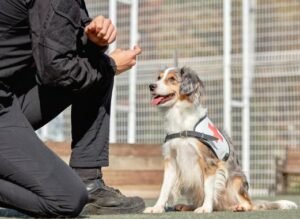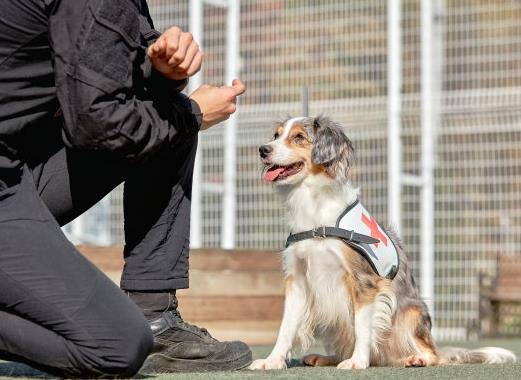Training a dog not to bark excessively involves several steps and techniques. Here are some strategies you can use:

1.Identify the Trigger: Observe your dog to determine what triggers their excessive barking. Is it due to boredom, alerting you of something, fear, or excitement?
2.Provide Adequate Exercise: Make sure your dog gets enough physical and mental stimulation through walks, playtime, and training sessions. A tired dog is less likely to bark excessively.
3. Use Positive Reinforcement: Reward your dog when they are quiet and not barking. Use treats, praise, or toys to reinforce the behavior you want.

4.Ignore the Barking: If your dog is barking for attention, avoid giving in to their demands. Wait until they are quiet to give them what they want.
5. Desensitization Training: Gradually expose your dog to the triggers that cause barking in a controlled manner. This can help reduce their sensitivity over time.
6.Teach the “Quiet” Command: Train your dog to be quiet on cue by using a command like “quiet.” Reward them when they stop barking in response to the command.

7. Provide Distractions: Give your dog interactive toys or puzzles to keep them occupied and prevent boredom-induced barking.
8. Address Boredom:
Boredom often leads to barking. Keep your dog mentally engaged with puzzles, interactive toys, or training sessions to prevent boredom.
9. Be Consistent:
Stick to your training routine and rules. Consistency is essential for your dog to learn what is expected of them.
10. Seek Professional Help if Needed:
If you are unable to control your dog’s barking, consider hiring a professional dog trainer who can provide personalized advice and techniques.
Consistency and patience are key when training a dog not to bark excessively. With time and effort, you can help your dog learn when it is appropriate to bark and when to be quiet.








